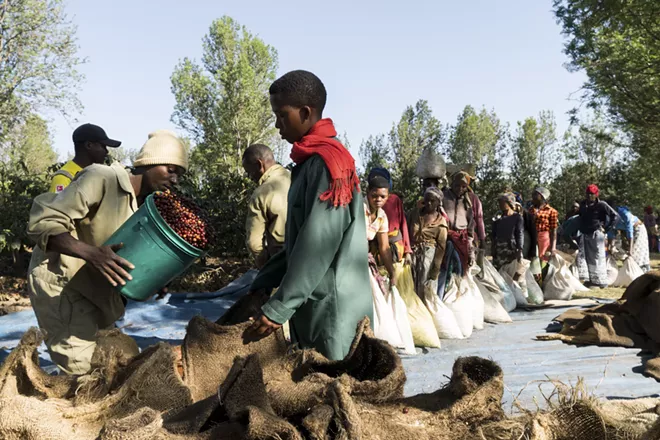
Adriane Ohanesian/The New York Times
Workers harvest coffee beans in Arusha, Tanzania, Oct. 16, 2018. More than half of all coffee species are at risk of vanishing in the wild because of climate change and deforestation, new research has found.
By Somini Sengupta
New York Times News Service
Aaron Davis, a British botanist, has spent 30 years trekking across forests and farms to chronicle the fate of one plant: coffee.
Now, in what is perhaps his most disheartening research, Davis has found that wild coffee, the dozens of varieties that once occurred under forest canopies on at least three continents, is at risk of vanishing forever. Among the world’s 124 coffee species, he and a team of scientists have concluded, 60 percent are at risk of extinction in the wild. Climate change and deforestation are to blame.
It matters because those wild varieties could be crucial for coffee’s survival in the era of global warming. In those plants could lie the genes that scientists need to develop new varieties that can grow on a hotter, drier planet.
Ultimately, Davis said, those wild coffees are vital for the millions of farmers who make a living from coffee, not to mention the many more who rely on caffeine to start their days.
“There are a broad range of traits, which have good potential for addressing specific issues in the future, whether it’s drought tolerance or disease resistance,” Davis said. “As we lose those coffees, our options diminish.”
Davis and his co-authors published their findings Wednesday in two separate papers, in Science Advances and Global Change Biology.
Of the 124 known wild species, most are not cultivated or consumed. Two exceptions are arabica, which has been farmed for hundreds of years in East Africa, and robusta, which has gone from the wild to one of the world’s most important commodities in the past 100 years.
To assess the risks faced by wild coffees, Davis and his colleagues applied a barometer developed by the International Union for Conservation of Nature, an international organization that assesses biodiversity risks. Using that index, commonly used to document risks to big mammals like elephants and rhinos, they found wild arabica, which mainly grows in the forests of Ethiopia, to be particularly vulnerable to the effects of climate change.
If greenhouse gas emissions continue to rise at their current pace, changing climate conditions could move wild arabica from the conservation union’s “near threatened” category to “extinct” by the end of the century.
